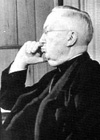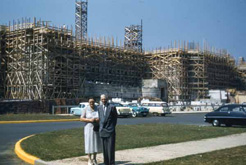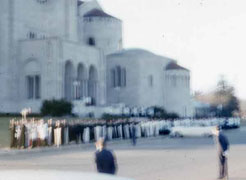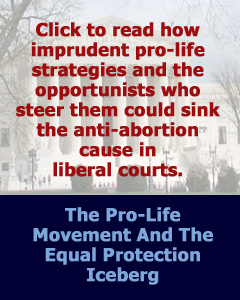Patrick Cardinal O'Boyle: If Only He Had Known Steadfast in the Faith: The Life of Patrick Cardinal O'Boyle For a large archdiocese, Washington, DC has a history that is relatively unsmirched by priest-sexual-abuse. Out of over a thousand diocesan, order and visiting priests, there are only 27 miscreants(1). Most of those perverts got up to their mischief in the mid 1970s or later, after the grip of Patrick Cardinal O'Boyle was loosened by senescence and retirement. This biography's author describes the cardinal as being autocratic, micromanaging and wedded to the customs of the immigrant-peopled New York City archdiocese where he was formed. It is precisely because of these lately-unfashionable qualities that DC is not under a years-long rain of debilitating fallout from scandal as are Milwaukee, Green Bay, Boston, Los Angeles and several small dioceses. Like many of his generation O'Boyle may have stared blankly without comprehension at cases of ephebophilia and sexual deviance if they were presented to him, meaning that he did not intentionally and specifically guard against them. And like many other bishops, he may have even followed the recommendations du jour of psychiatrists who, decades ago, taught that ephebophiles were curable. Given Psychiatry's amorality and its reclassifying of "bad" behavior--indeed every behavior--as a symptom of disease, it is possible that some psychiatrists evaluating pedophiles did not think that the latters' predation was a big deal. Perhaps some even considered it to be a natural, healthy expression. What O'Boyle did do was demand that his priests behave and dress like priests. In so insisting he created a climate that was inhospitable to sexual deviltries. A bishop who disciplines his priests by demanding that they wear hats or not wear beards is going to be conceived as a leader who is also not likely to brook them getting manicures or tickling boys or taking the latter off for rides on red motorcycles. If the leaders of dioceses or religious orders allow religious life to become a cushy gite for bon vivants then the ranks will fill with bums. If said leaders demand poverty, humility, chastity, obedience and the qualities outlined in The Epistle of Paul to Titus 1:5-16, then the bums will stay away and men truly dedicated to standing in persona Christi will join up and dominate. No climate, of course, is entirely bum-proof. One of the priests who got under O'Boyle's nose was William Stock. He was assigned to my parents' parish, St. Jane Francis de Chantal in Bethesda, MD in the early 1970s. St. Jane's church and school buildings, by the way, are among the reasons why Washington's first archbishop was nick-named "Cinderblock O'Boyle." The original structures are literally built of cinderblocks as are those at nearby Holy Cross, St. Martin of Tours, St. Bartholomew's and, I'm sure, many others that O'Boyle raised in DC's exploding Maryland suburbs around sixty years ago. Stock's associate-pastor duties involved being some kind of buddy to boys entering adolescence as I was. I, however, thought that there was something creepy about him. I didn't like him and I stayed away from him. For one thing he didn't dress like a priest, often appearing in a goofy lumberjack coat. There are no known incidents of Stock molesting boys at St. Jane's as he did elsewhere, but he certainly engaged in ephebophile "grooming behavior," 'nuff said. When the long-time pastor of the parish died, he was replaced by Msgr. Martin W. Christopher, who was very much an O'Boyle man, a manly man, and a serious priest. I don't think that Msgr. Christopher had set down his luggage in the rectory foyer before "Father Bill" was gone. Patrick O'Boyle could never be accused of that modern virtue of "being nice." Many lieutenants, sergeants and privates in his diocesan army regarded him as a Scranton hick of a mick and/or as the New York Catholic-charities bureaucrat who had little pastoral experience. His chancellor, later auxiliary bishop, Philip M. Hannan(1), was a DC-bred rich boy, confidante of the Kennedys, a type who would notice if the pickle dish didn't match the soup bowl. He and O'Boyle probably foiled each other to the lasting benefit of the archdiocese. Hannan was liaison between the socially awkward O'Boyle and the city's movers and shakers. O'Boyle kept Hannan from getting the local church too involved in the real-estate business; excessive wealth would have later made it an attractive galleon for lawyers to plunder. When super-achiever Hannan founded the John Carroll Society (the expensive club of lawyers that hosts the annual Red Mass which the powerful attend to see and be seen), O'Boyle warned its members not to give the impression that it was an elite power group out to influence national policy. To my knowledge, no member of the JCS has ever had a bad and embarrassing light thrown on him as have members of Legatus with its controversial founder (Tom Monaghan) and its kooky associations. These days, as governments go broke, Cardinal O'Boyle seems like a dinosaur. He was an orthodox Catholic, a social conservative, but one who also believed in partnering with paternalistic, big-spending government. Orthodox Catholics who have lived through the past forty years and who have read JPII's Centessimus Annus(2) and B16's Deus Caritas Est(3) have no use for large and intrusive government. They have also read about the operators of state-subsidized Catholic institutions in Canada or The United Kingdom being hauled in and charged because the moral truths that they teach are "hate." Younger Catholics share in the new awareness of government's dangers. However in the decades of Patrick O'Boyle's priesthood and episcopacy, it was hard to find any citizen who did not accept the liberal broadcasting of federal tax dollars and wide-ranging action of the state. O'Boyle could decry welfare handouts as demoralizing and demeaning--as he did as early as the 1930s--and deliver sermons denouncing birth control in Lyndon Johnson's Great Society programs, but throughout all his vocation he begged and argued for state aid for the poor and for the church first from the City of New York, later from the U.S. Congress. In his mind there was no contradiction. Part of this is because, like Dorothy Day, O'Boyle had the intelligence, sincerity, orthodoxy, discernment, wisdom, justness, true charity to camp on the border of the badlands and walk right along the line without stumbling over. He was likewise a pioneer of racial justice and integration, but he would have none of activist antics or demands for special treatment. Fifty years ago, the progressive big spenders were pretty much a homogeneous group of white males who shared the same Judeo-Christian view of personhood. But later the traditionally and habitually supported political party of working-class Catholics in old ethnic neighborhoods was slowly transformed into the party of abortion, deconstruction of the family, inflationary economics and compulsion (as in health coverage, emissions tests etc.). Unfortunately the problem with pitching the camp by the badlands is that lesser-caliber campers don't have all the qualities that keep the extraordinary individuals on the line. Others heard the stirring poetry of the secular utopian left and rushed across, among them the self-loathers, the envious and the attention whores. Church for these Catholics became about helping the poor, about getting government aid for the poor, about allowing anything, including contraception and abortion, if it materially helped the poor. The end-result of pitching the camp on the border rather than high in the hills of Catholic Tradition--with its principle of Subsidiarity--is the "Catholic" who preaches and believes that abortion is a "human right." Before becoming a bishop, O'Boyle distinguished himself as an administrator of New-York-Archdiocesan and national Catholic charities. MacGregor's biography suggests that these were vast and effective with more of a presence than they have today. Any more, one seldom hears of protectorates and orphanages or trade schools. St. Ann's Infants and Maternity Home on the DC/Maryland line, an institution that was greatly enhanced under O'Boyle's leadership, is one outstanding example. It would be interesting to compare the number, size and work of today's Catholic charities with those of the 1930s. I suspect that the church's efforts at "loving personal concern" have contracted in recent decades thanks to Catholics who believed that the government could do more and do it better. Today, not fifty feet from O'Boyle's tomb at St. Matthew's Cathedral, Great Society children beg, all of them having no skills, no conception of work, all of them believing that everyone passing by owes them at least a dollar. If only Patrick Cardinal O'Boyle had known what many of us know now. ---------------------------------------- (1) A recent Washington Post article put the number at 44, however I'm using stats from www.bishop-accountability.org here. BA doesn't say that the 27 are "credible accusations" as it does for other dioceses. There may only be 16 credible accusations. See: (2) Ninety-eight-year-old New Orleans Archbishop Philip M. Hannan's recent autobiography, The Archbishop Wore Combat Boots (Our Sunday Visitor Press, 2010) is a good companion volume to the O'Boyle biography under review. In it Hannan writes that a DC doctor warned O'Boyle that psychiatrists were wrong in claiming that ephebophilia and pedophilia could be cured. (4) Deus Caritas Est |



